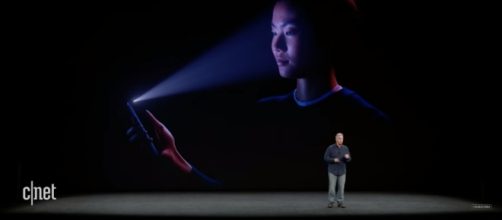When Apple decided to drop its Touch Id technology, users had mixed reactions. Taking out the iconic round button at the bottom of the iPhone screen makes some significant difference. It does not only give the phone a different look but also takes away a function that is proven useful to many. While some people expressed missing the Touch ID, others showed great enthusiasm for its replacement.
On Tuesday's launch event, Apple unveiled the Face ID, which is the company's new facial recognition technology. The feature is actually simple to set up and it works by enabling the TrueDepth camera.
For now, the Face ID only works with the iPhone X and the feature unlocks the phone by looking at it. Under Secure Enclave, the user's facial map is encrypted and protected. The immediate authentication process takes place on the device.
A lockout
While testing the Face ID feature at the event, a bio-lockout was experienced by Apple’s SVP of software engineering Craig Federighi to which he was prompted to use a passcode instead. The semi-faulty demonstration led him to switch to a backup unit that worked properly. Although it did not go as planned, Apple is firm in reassuring the public that it was not a malfunction.
The model used for the testing is actually encrypted with Federighi's facial map.
Ahead of the stage demo, the device had been held by a number of people without realizing that the Face ID was trying to authenticate their face. After numerous errors validating its owner's facial features, the iPhone did subscribe to what it was designed to do. It required Federighi's passcode. Even he, himself, was surprised it happened to him on stage after having used the phone for months. This is just one of the issues he addressed in an email sent to him by MacRumors reader and developer Keith Krimbel.
Face ID coverage and theft prevention
Krimbel asked the Apple executive a couple more questions. The first inquiry is whether the FaceID will work with sunglasses. The other question focuses on what will prevent a situation where a thief takes his phone, points it to his face, and runs.
Federighi responded by confirming that the function will still work even when wearing most sunglasses. The term most has been highlighted since not all sunglasses allow IR projection, which is what unlocks the feature to work, despite the shades in between. Since this is on a case-by-case basis, it is best if users try out the Face ID first to confirm if their specific pair of lenses works with the device.
As for mitigating against thieves, the Apple exec explained how the Face ID quickly disables by gripping buttons on both sides of the phone. Further, he said that if the user does not stare at the phone, it will not unlock. These are definitely great measures to prevent theft since they offer a more secure lockout.
E-mailed #CraigFederighi about #FaceID and actually got a response! pic.twitter.com/3Ytt1k6WvK
— Keith Krimbel (@KeithKrimbel) September 14, 2017


